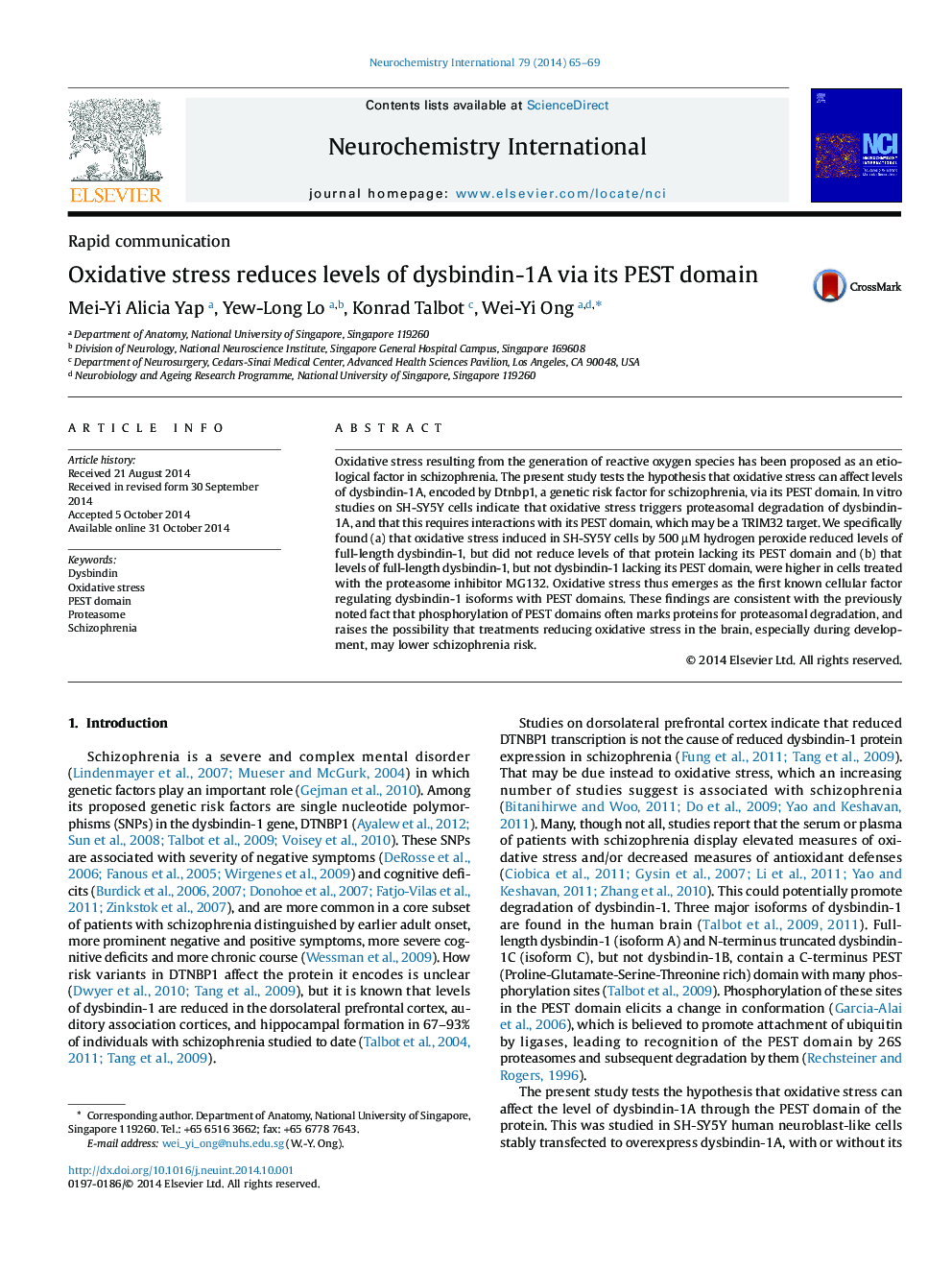| Article ID | Journal | Published Year | Pages | File Type |
|---|---|---|---|---|
| 2200473 | Neurochemistry International | 2014 | 5 Pages |
Oxidative stress resulting from the generation of reactive oxygen species has been proposed as an etiological factor in schizophrenia. The present study tests the hypothesis that oxidative stress can affect levels of dysbindin-1A, encoded by Dtnbp1, a genetic risk factor for schizophrenia, via its PEST domain. In vitro studies on SH-SY5Y cells indicate that oxidative stress triggers proteasomal degradation of dysbindin-1A, and that this requires interactions with its PEST domain, which may be a TRIM32 target. We specifically found (a) that oxidative stress induced in SH-SY5Y cells by 500 µM hydrogen peroxide reduced levels of full-length dysbindin-1, but did not reduce levels of that protein lacking its PEST domain and (b) that levels of full-length dysbindin-1, but not dysbindin-1 lacking its PEST domain, were higher in cells treated with the proteasome inhibitor MG132. Oxidative stress thus emerges as the first known cellular factor regulating dysbindin-1 isoforms with PEST domains. These findings are consistent with the previously noted fact that phosphorylation of PEST domains often marks proteins for proteasomal degradation, and raises the possibility that treatments reducing oxidative stress in the brain, especially during development, may lower schizophrenia risk.
